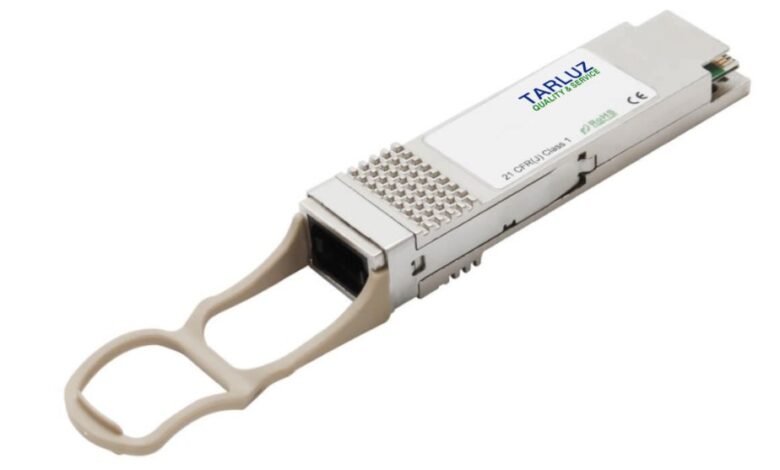Understanding the QSFP28 SR4 100G Optical Module

The QSFP28 SR4 is a prominent member of the 100G optical module family, designed to meet the growing demand for high-speed, high-performance connectivity in modern data centers and enterprise networks. As the name suggests, the SR4 module provides a 100G data rate over short-range fiber optic connections. This module utilizes multimode fiber (MMF) and MPO (multi-fiber push-on) connectors, making it an ideal solution for intra-data center communication where space constraints and the need for fast data transmission are paramount.
QSFP28 SR4 Technical Specifications
The QSFP28 SR4 module supports a 100G data rate and is optimized for short-range transmission, typically up to 100 meters on OM4 multimode fiber. Its design features four independent lanes of 25G, each carrying data at 25Gbps, combined to provide an overall 100Gbps data rate. The SR4 module operates on the 850 nm wavelength and is engineered to minimize signal degradation over short distances, providing high throughput and efficiency. This makes it particularly suitable for dense and high-traffic networks, such as those found in data centers, enterprise networking, and high-performance computing environments.
How Does QSFP28 SR4 Works?
The SR4 module is built around a technology known as parallel optics, which allows it to transmit data across four separate channels using multimode fiber. Each of these channels carries 25G of data, and the signals are transmitted at the 850 nm wavelength, a common standard for short-range communication. The module uses MPO connectors, which allow multiple fibers to be connected simultaneously, simplifying installation and maintenance. The SR4’s ability to provide high bandwidth over relatively short distances—up to 100 meters on OM4 fiber—makes it ideal for use in tightly packed data centers and short-range interconnects.
The QSFP28 SR4 Applications
The QSFP28 SR4 is best suited for applications requiring high-speed data transfer over short distances. It is widely used in data center interconnects, server-to-server communication, and high-density switching where low latency and high throughput are essential. The module is also a go-to option for short-range intra-building networks and any setup that demands fast data transmission without the need for long-range fiber infrastructure. Its compact form factor and efficient design help minimize power consumption while ensuring reliable data transmission, making it an attractive option for network operators looking to upgrade their infrastructure.
Advantages and Limitations
One of the key advantages of the QSFP28 SR4 module is its cost-effectiveness. Since it operates over multimode fiber, which is generally less expensive than single-mode fiber, the SR4 module is more affordable compared to long-range modules like the LR4. Additionally, the module offers high performance with low latency, making it an ideal choice for data centers and high-performance computing environments. However, the SR4’s primary limitation is its limited transmission distance—it is designed for short-range communication and may not be suitable for networks that require longer reach, such as inter-building or metropolitan area networks.
Conclusion
In conclusion, the QSFP28 SR4 module offers an excellent solution for short-range, high-bandwidth networking. Its high performance, cost-effectiveness, and ease of integration into existing fiber networks make it a popular choice for modern data centers and enterprise applications. However, for users requiring long-range connectivity, alternative modules like the QSFP28 LR4 may be more appropriate.







